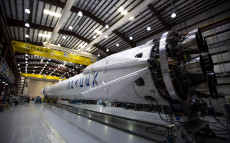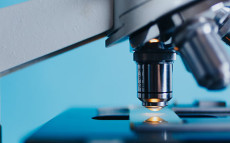- pathfindersAI
- Job Profile
Remote Sensing Scientists and Technologists
Summary
Remote Sensing Scientists and Technologists: A Career Overview
What They Do
Remote Sensing Scientists and Technologists are at the forefront of a fascinating domain that intersects technology, environmental science, and data analysis. These professionals use advanced technologies, such as satellites, drones, and radar systems, to gather and analyze data about the Earth's surface and atmosphere. Their work often involves interpreting the captured imagery and data to gain insights into various natural and man-made phenomena. For instance, they may monitor deforestation in the Amazon, track weather patterns to predict natural disasters, or even contribute to urban planning by analyzing city landscapes. The field of remote sensing is not just limited to Earth; it has applications in planetary science for missions to Mars and other celestial bodies.
Job Responsibilities
The job responsibilities of Remote Sensing Scientists and Technologists are diverse and intellectually stimulating. Primarily, they engage in data acquisition, which involves deploying and managing remote sensing equipment. Data processing is another critical responsibility, wherein they utilize sophisticated software to convert raw data into usable imagery and datasets. Analytical tasks form a substantial part of their daily activities; these professionals analyze the collected data to identify patterns and draw conclusions. Further responsibilities include conducting research to improve remote sensing technologies and methodologies, writing reports, and presenting findings to stakeholders. Collaboration is also key; these scientists often work alongside environmentalists, urban planners, and engineers to apply their findings to real-world problems.
Essential Skills
To excel in the field of remote sensing, a unique blend of technical and soft skills is essential. First and foremost, a strong foundation in mathematics and physics is crucial, as these subjects form the basis for understanding how remote sensing technologies work. Proficiency in using Geographic Information Systems (GIS) and remote sensing software such as ERDAS Imagine or ENVI is also critical. Analytical skills are paramount to interpret complex datasets and imagery accurately. Additionally, problem-solving abilities and creativity are required to devise innovative solutions for data acquisition and analysis. Communication skills are equally important, as these professionals must articulate their findings effectively to both technical and non-technical audiences.
Educational Pathways
Aspiring Remote Sensing Scientists and Technologists typically embark on their career path by pursuing relevant undergraduate degrees such as Geography, Environmental Science, Physics, or Engineering. Courses in GIS, computer programming, and statistics are highly recommended during undergraduate studies. Many professionals in this field further enhance their expertise by obtaining a master's or doctoral degree in Remote Sensing, Geospatial Science, or a related discipline. Advanced degrees often provide specialized knowledge and research opportunities that are beneficial for career growth. Professional certifications such as those offered by the American Society for Photogrammetry and Remote Sensing (ASPRS) can also increase employability and credibility in the field.
Career Prospects
The career prospects for Remote Sensing Scientists and Technologists are promising and multifaceted. Job opportunities exist in various sectors, including environmental consulting firms, government agencies such as NASA and NOAA, academic and research institutions, and private industry. With the increasing reliance on geospatial information for decision-making, the demand for skilled professionals in this field is expected to grow. Additionally, the advent of new technologies such as machine learning and artificial intelligence opens up innovative avenues for data analysis, further broadening career prospects. Remote sensing experts often have the flexibility to work on diverse projects, from climate change studies to disaster management, making it a dynamic and rewarding career choice.
Conclusion
In summary, a career as a Remote Sensing Scientist or Technologist offers a blend of technical challenges and the opportunity to make meaningful contributions to understanding and solving environmental and societal issues. With their expertise in data acquisition and analysis, these professionals play a pivotal role in various crucial fields, from environmental monitoring to urban planning. Their work requires a strong educational background, a diverse skill set, and a passion for technological and scientific advancements. As the reliance on spatial data continues to increase, the demand for skilled remote sensing professionals is set to rise, making it an exciting and viable career path for those fascinated by the intersection of technology and the natural world.
Video
Compensation
| State | Median Salary | Median Hourly | Positions |
|---|---|---|---|
| AL | 109,080 | 52.44 | 220 |
| AK | 111,090 | 53.41 | 130 |
| AZ | 109,510 | 52.65 | 160 |
| CA | 126,910 | 61.02 | 2,470 |
| CO | 123,590 | 59.42 | 860 |
| CT | 104,190 | 50.09 | 100 |
| DC | 154,420 | 74.24 | 750 |
| FL | 111,610 | 53.66 | 430 |
| GA | 113,690 | 54.66 | 440 |
| HI | 105,080 | 50.52 | 150 |
| ID | 88,340 | 42.47 | 120 |
| IL | 107,340 | 51.61 | 620 |
| IN | 64,890 | 31.20 | 1,230 |
| IA | 82,830 | 39.82 | 60 |
| KS | 116,560 | 56.04 | 140 |
| KY | 63,710 | 30.63 | 280 |
| LA | 86,550 | 41.61 | 260 |
| ME | 66,220 | 31.84 | 30 |
| MD | 134,410 | 64.62 | 2,190 |
| MA | 125,550 | 60.36 | 290 |
| MI | 108,510 | 52.17 | 220 |
| MN | 152,340 | 73.24 | 670 |
| MS | 99,130 | 47.66 | 370 |
| MO | 109,890 | 52.83 | 90 |
| MT | 80,240 | 38.58 | 160 |
| NV | 101,040 | 48.58 | 150 |
| NJ | 107,990 | 51.92 | 510 |
| NM | 123,760 | 59.50 | 230 |
| NY | 103,900 | 49.95 | 1,420 |
| NC | 103,400 | 49.71 | 620 |
| OH | 106,450 | 51.18 | 500 |
| OK | 108,330 | 52.08 | 80 |
| OR | 105,690 | 50.81 | 210 |
| PA | 101,750 | 48.92 | 620 |
| SC | 128,020 | 61.55 | 90 |
| TN | 124,760 | 59.98 | 70 |
| TX | 92,430 | 44.44 | 1,500 |
| UT | 98,490 | 47.35 | 140 |
| VA | 143,000 | 68.75 | 1,160 |
| WA | 120,660 | 58.01 | 440 |
| WV | 100,380 | 48.26 | 120 |
| WI | 88,500 | 42.55 | 70 |
| WY | 61,580 | 29.61 | 50 |
Similar Occupations
In this area you will find other occupations that are close to the one you were viewing in tasks, knowledge and work environment. If the primary job profile you are viewing isn't quite to your liking, take a look around and see what else is available.
Basic and Premium Accounts have more alternative occupations available than the Free account.

Aerospace Engineers - 17-2011.00
Aerospace Engineers design, develop, and test aircraft, spacecraft, and related systems and equipment to ensure they meet safety, performance, and regulatory standards. They work on a range of areas including structural design, navigation systems, propulsion, and aerodynamics to advance aviation and space exploration technology.
-
$130,720/yr
Median Pay -
66,660
Number of Jobs

Atmospheric and Space Scientists - 19-2021.00
Atmospheric and Space Scientists study the physical conditions, motions, and processes of the atmosphere and outer space to forecast weather, understand climate change, and explore celestial phenomena. They utilize advanced technology and mathematical models to analyze atmospheric data and provide critical information for aviation, agriculture, disaster preparedness, and space missions.
-
$92,860/yr
Median Pay -
9,310
Number of Jobs